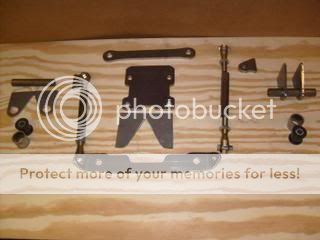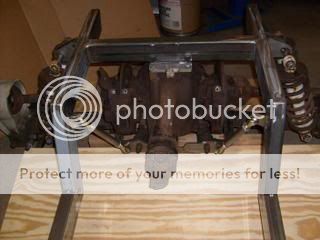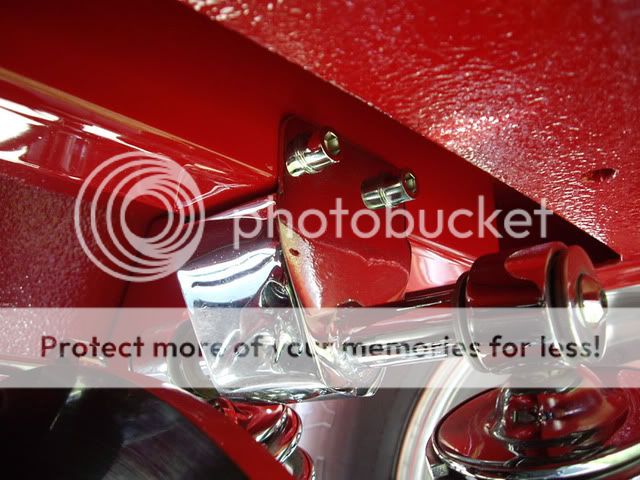The tubing for the trailing arm is 7/8" x .156" D.O.M. so that it can be tapped 5/8-18 for the rod ends on the front. The drawing shows using a bushing sleeve for using the original Jag bushings or the delrin replacements that some vendors sell. The last one that I installed (Lee in K.C.'s) he used the Kugel adjustable rod ends on the back. If I remember right, I had to make up some spacers to make up for the difference in width between the end fitting of the lower control arm and the tab. The tube was left straight on that application. I assume that this is what you are referring to in asking about the insulator.
As to using just one coilover per side, yes you could probably get away with it with no problem, but be aware that Jag rears are rather weight sensitive. You will need to change springs to make up for the change to the design. I don't know that you would have to double the spring rate but a significant amount would probably be required.
The amount of leverage exerted on the coilovers by the placement of the mounting point for the shocks in relation to the length of the lower control arm is quite a bit. The other thing that enters into it is the angle of the shock. The more angle in relation to the input of load results in the need for heavier springs to maintain ride height and ride stiffness.
A little bit of difference in the upper mounting width can mean more difference in ride than many people realize. That's probably why you see so many different opinions about which spring rates for Jag rears when that question is asked on one of these boards. It's kind of like the Harley coilover controversy. I measured one of the springs from a Harley and it was about 290# per inch. The generally accepted spring rate for coilovers with a straight axle rear on a bucket seems to be somewhere around 150#. I would think that there wouldn't be much "ride" when using the Harley units. But here again, there is leverage and angle in the mounting involved in the original application. Those definitely affect the choices to be made.
I've always been impressed with how English engineers do things very "properly". The Jag rear is a good example of that to me. All of the pivot points have needle bearings and seals. The use of the two shocks to balance the forces on the lower control arm. The entire assembly being isolated from the body structure and free to move but controlled with the paddle arms. But then too, they weren't designing an economy car.
Hope this helps...or at least doesn't confuse the issues too much more. :lol:











